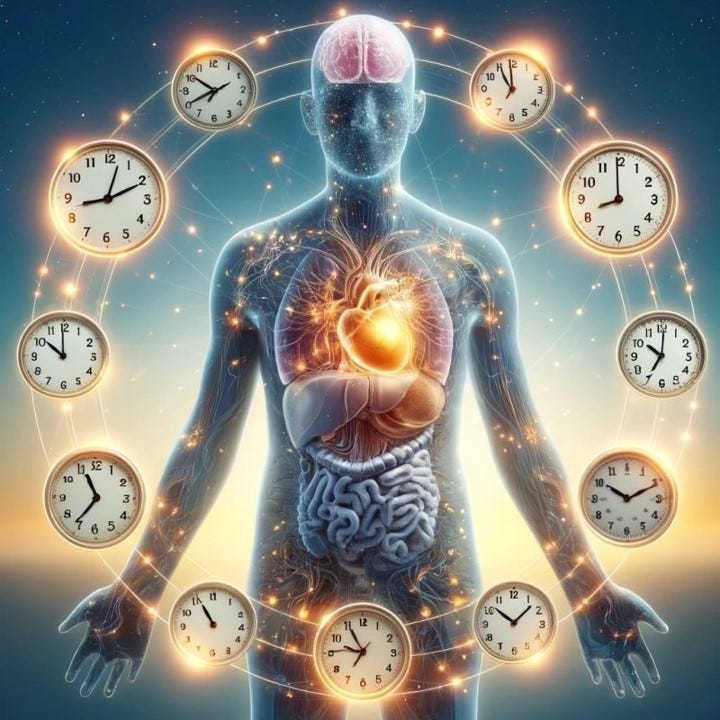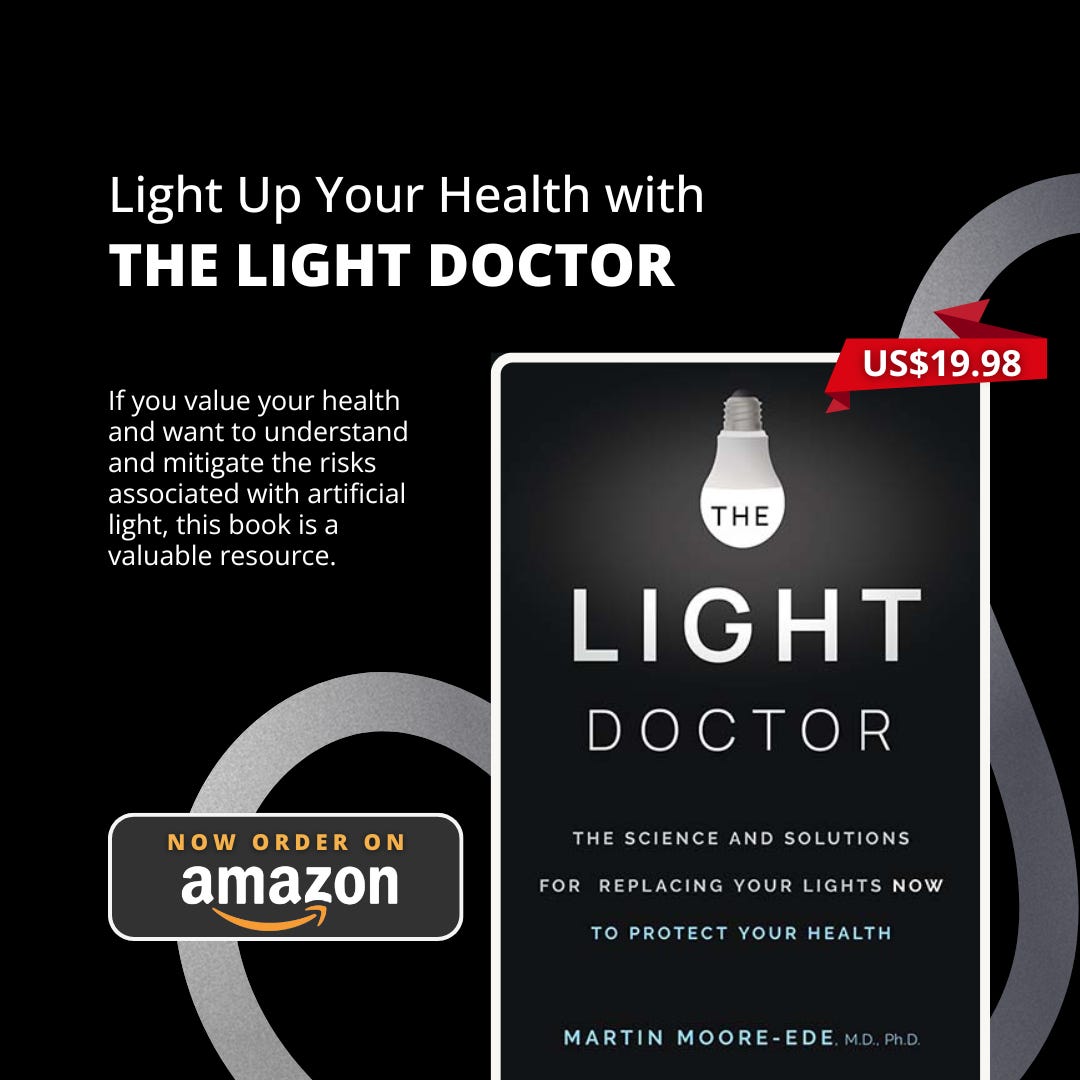Let's use Breast Cancer Awareness Month to teach the critical role of blue-rich light at night
Here is Week 1 (First Seven Days) of the evidence I will present during the 31 days of October - Breast Cancer Awareness Month
For over 10 years, we have known that the blue-rich light that is emitted from conventional blue-chip LEDs at night significantly increases the risk of breast cancer in pre-menopausal women. Yet government policies and utility company incentives have heavily promoted the widespread adoption of blue-rich LED lights since 2014.
During this ten-year period, another 2.6 million American women have been diagnosed with breast cancer, and the evidence suggests that the use of blue-rich light at night has initiated or accelerated too many of these cancers.
Let’s use this year’s Breast Cancer Awareness Month - October 2024 - to educate the world about the devastating impact of blue-rich light after sunset on women’s health, and teach the world about the blue-free light sources that are now available.
Here is the first week (October 1-7) of the 31 days of evidence: The full explanation of this evidence and the relevant scientific citations can be found in my book, THE LIGHT DOCTOR.
October 1.
OCTOBER 2024 Breast Cancer Awareness Month – It is time we recognized that blue-rich light at night is a major cause of breast cancer
We know the major causes of many preventable cancers. Smoking causes most lung cancers, asbestos most mesotheliomas, human papillomavirus most cervical cancers. However, the cause of the accelerating rate of breast cancer in young women has been regarded as a mystery.
Each day during Breast Cancer Awareness Month, I will present the extensive scientific evidence that increasing rates of breast cancer are driven by exposure to blue-rich electric light at night.
I believe it is high time we took seriously the prevention of breast cancer by controlling the light spectrum entering our eyes from light bulbs, fixtures, and screens.
October 2
145 years ago: Women who have never seen electric light rarely get breast cancer
Breast cancer was a rare disease before the invention of electric light in 1880.
Even today, some women have never seen electric light. and they rarely get breast cancer. In contrast, women who are regularly exposed to bright electric light after sunset have breast cancer diagnosis rates that are five or more times higher than women with no exposure to electric light.
October 3
75 years ago: Breast cancer rates climbed five-fold as the world was electrified
Starting in 1880 the gradual electrification of the industrialized world began. Electric lights came late to Iceland because they had no coal or oil to generate electric power. Breast cancer was rare in 1925 (20 cases per 100,000 women per year) before the first electric power plants were built but then climbed steadily by 1990 to over 105 cases per 100,000 women as homes & businesses installed electric lights.
October 4
55 years ago: Breast cancer quadrupled in the USA after blue-rich fluorescent light introduced
Only 68,000 new cases of breast cancer were diagnosed in the USA in 1970 before the widespread adoption of blue-rich fluorescent lights, as compared to nearly 300,000 new cases per year today. This rise can only be partly explained by the introduction of mammogram screening and population growth.
October 5
45 years ago: Electric light at night disrupts human circadian clocks
By 1980, the master circadian clock in the human brain was identified in the suprachiasmatic nucleus (SCN), and it was shown to be synchronized by the daily light-dark cycle. Exposure to electric light at night reset the master SCN clock and disrupted the internal synchronization of the multiple circadian clocks throughout the human body, causing malaise and ill health.
October 6
45 years ago: Light at night suppresses melatonin in humans
Melatonin is a hormone released by the pineal gland at night, which signals to the cells of the body that it is dark outside. In 1980, melatonin release in humans was first shown to be suppressed when electric lights are switched on at night.
October 7
35 years ago: Light at Night – Melatonin Suppression – Breast Cancer pathway
In 1987, Richard (“Bugs”) Stevens, an epidemiologist at the US Department of Energy’s Pacific Northwest National Labs, was the first person to suggest a link between electric light at night, the suppression of melatonin, and breast cancer.
Next week
Next week I will release to my Substack subscribers the next 7 scientific developments and breakthroughs. I am also releasing 31 daily Instagram posts during October Breast Cancer Awareness Month
I normally post my Substack columns every two weeks, so I thought that daily posts might be overwhelming. But please give me feedback on how often you would prefer to receive these posts:
Sources
For further details and background on each of these scientific developments please consult my new book THE LIGHT DOCTOR: Using Light to Boost Health, Improve Sleep and Live Longer. This also provides the citations to the scientific peer-reviewed literature.













Yes, it is known, that irritation of the circadian "inner clock" is causing some sort of permanent jet lag with deteriorating effect on your immune system, which gives pathway to chronic diseases including various kinds of cancer- but why would the LED retrofit light bulb industry not switch to harmless 365nm near UVA LED stimulus for the spectral conversion phosphors or quantum dots to cure these harmful "side effects"? It might somewhat limit the energy efficiency grade labeling of the light bulbs since the blue light could no longer contribute to the spectral light yield but what is more important - health or marginal electric energy savings? (see my 2015 German article https://www.all-electronics.de/elektronik-entwicklung/kommt-das-gluehlampenverbot-zu-frueh.html)